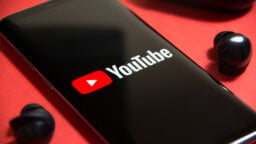
Netflix is doing a lot of things that Spotify isn’t.
This year, across licensed content and its own original shows, the company will spend $5bn on programming.
It’s just launched in 109 countries, including India, where Daniel Ek is yet to tread.
It boasts around 75m paying subscribers – three times that of Spotify.
Oh, and it’s turning a profit.

There is an overly simplistic conclusion to draw from the graph above: that the Netflix model – one month’s free trial then pay, as deployed by Apple Music – is a better driver of subscriptions than Spotify’s freemium setup.
That may or may not be true, but it dismisses the fact that a ‘rental’ and satellite subscription culture was rife in film and TV before Netflix started encouraging customers to move from its DVD borrowing service to streaming in 2010. (Netflix’s streaming service technically launched as ‘Starz Play’ in 2008- the same year Spotify was born.)
It’s also worth bearing in mind that Spotify now has around 100m total users. For Netflix in Q4 2015, that number stood at 77m (which means 6m people were enjoying their free trial).
By now, Netflix’s paying subs number will already be hovering around 75m.
(Please note: MBW’s 25m number for Spotify in Q4 2015 is an estimate and may well be conservative.)
And yet Netflix’s growth is undeniable.
Yes, if we trace back to 2011, its setup and audience adoption already put it comfortably ahead of Spotify – with 22m paying customers vs. Daniel Ek’s 2m.
But just look how it’s exploded since.
Important: please note the biggest kink in Netflix’s ascent above.
There was a crucial turning point between Q1 2013 and Q2 2014, when Netflix’s subscription audience grew by a whopping 71.4%, from 28m to 48m.
(In the same time frame, Spotify’s subscriber base jumped 66.7% to 10m.)
It is surely no fluke that Netflix’s first original programme, House Of Cards, debuted on the service in February 2013.
This was the moment Netflix got into ‘A&R’.
And it’s in this realm that it’s outspending not only Spotify – but music’s major labels and publishers, too.
A quick caveat on that deliberately dramatic sentence: Netflix will apparently shell out around $5bn on content in 2016.
Warner Music Group, the only major music business that trades (its debt) publicly – thus giving us a fully transparent window into its finances – spent $980m on A&R in FY 2015, according to its SEC filing, down 1.8% year-on-year.
Extrapolate that using copyright ownership market share across the three major labels/publishers, and you reach a total annual global A&R spend of around $4.5bn.
However, and this is important, Netflix’s $5bn includes licensed and acquired content, meaning its true ”A&R’ spend is buried within the figure.
Here’s what we can safely say, though: Netflix, a digital service, is at least rivaling music’s biggest artist and repertoire sources for investment in new entertainment content.
And it’s doing so with great success.
In Q4 2015 alone, the platform launched five new series of its own, including Marvel’s Jessica Jones and Master of None , starring Aziz Ansari.
In 2016, it says it plans to launch over 600 hours of original programming, up from about 450 hours in 2015.
Also, Netflix just refuses to play the same odds as music A&R’s roulette table.
The 600 minutes of content Netflix will create in 2016 is, time-wise, equivalent to just 14 albums – and a lot more expensive too.
At a major label, you could fairly predict that all of those 14 albums would flop. That’s just the reality of the high stakes A&R game the music biz plays.
Yet Netflix needs an enviable hit rate to operate, and it gets one: combined with Narcos, Sense8, Marvel’s Daredevil and Bloodline, Netflix’s new Q4 programmes in 2015 claimed six of the Top 10 new TV shows of the year, according to IMDB.
As for those who like to question the cultural validity of popcorn TV shows vs. earnest albums, eat this:
In late December, Netflix launched documentary Making a Murderer, which will sweep the board at awards events this year and – in Netflix’s words – has ‘triggered a national conversation on fairness of the American criminal justice system’.
I mean, we all like Justin Bieber, but these are slightly loftier aims.
So what can we learn?
Netflix is putting the major label system and music’s biggest streaming DSPs to shame – both in terms of ‘A&R’ investment (plus subsequent success rate and cultural impact) and, lest we forget, that growth in paying audience.
These two factors, divided into age-old digital/label factions in the music business, are combining in the film world to devastating effect.
At the heart of Netflix’s growth is a magic, intangible quality that every record company is desperate for: people with brilliant taste, who aren’t scared to pay masses to make something daring, different and brilliant.
Its financial plan is equally bold.
In 2015, Netflix spent around $3bn on programmes – a figure that will rise another 67% this year. It shelled out a further $317m on marketing.
Yet it only turned an annual net profit of $122.6m.
These are very tight margins, reliant on precision and convicted creative risks.
When you start thinking of what the music business will look like in 10 years, you have to wonder about Netflix’s demonstratively successful convergence between digital distributor and creative powerhouse.
Over in China, Baidu, a digital service with more than double Spotify’s user base, has just merged with a leading record label.
It is not a foolish company.
All of the chatter about Spotify suggests it has one of two big moments in its future: an IPO, or a buyout from a tech giant like Google.
The likelihood of an acquisition of Spotify by a major music company looks impossible, as multiple rightholders already share 20% of equity in Daniel Ek’s firm. Messy.
This is surely the only reasonable explanation as to why Len Blavatnik‘s Access Industries continues to pump money into Deezer, an economically challenged DSP which lost an average of €2.26m ($2.45m) every month in 2014.

Perhaps Blavatnik realises that the ability to own, promote, distribute and create content will be the kingmaking recipe for digital entertainment media over the next 10 years.
Perhaps Lucian Grainge does too, what with Universal having recently launched its own white label streaming service with brands such as HP and a Brazilian bank.
Amazon certainly does: respectively in film, with its own Studios and Prime Video service, and in music, where its been quietly creating its own album projects.
None of these companies are currently blending these operations quite as successfully as video streaming’s market leader.
Yet they all realise something highly apparent: by boldly bringing together exemplary artistry and seamless dissemination, Netflix is clearly onto a winner.
The MBW Review is supported by 




